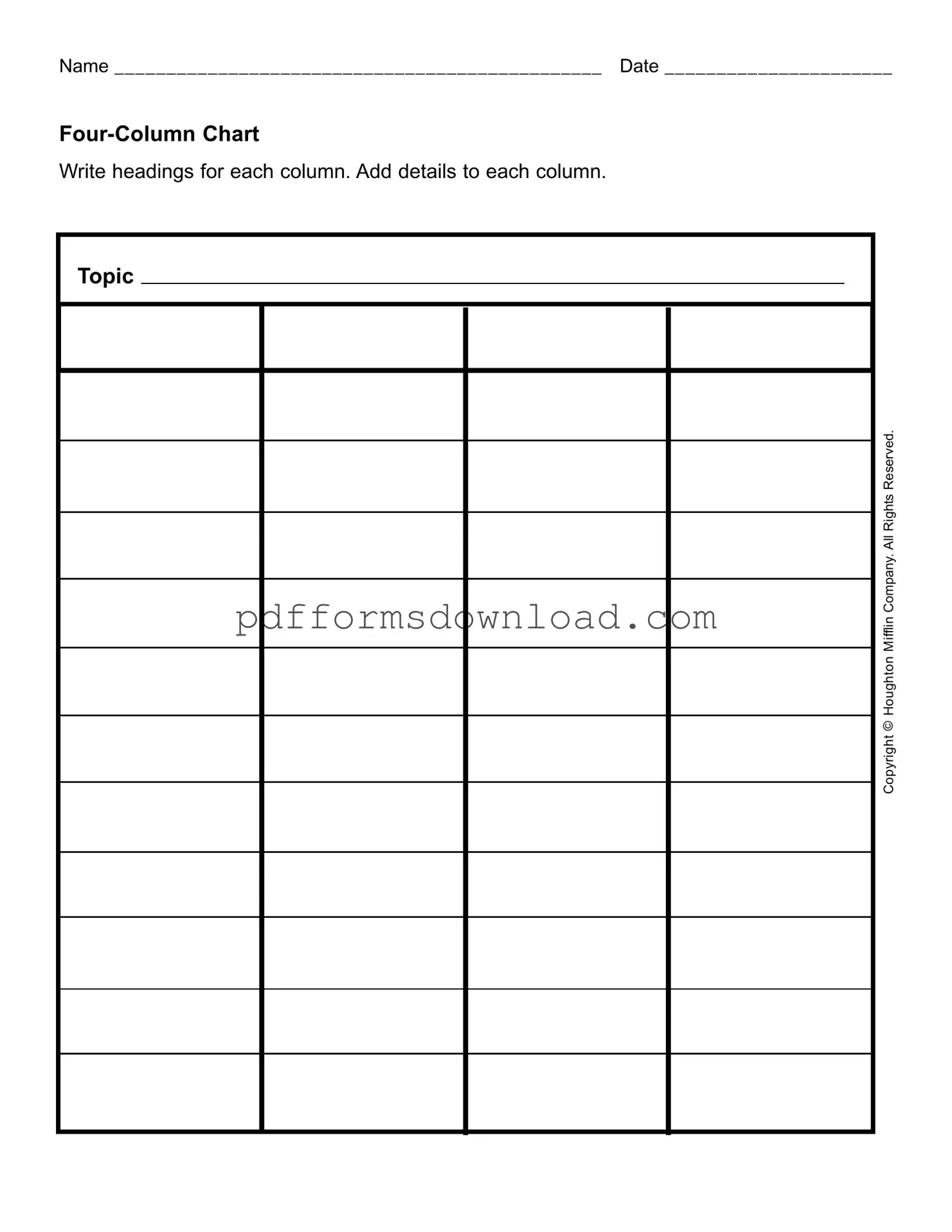What is a Four Column Chart form used for?
The Four Column Chart form is a versatile tool designed to help individuals organize information clearly and efficiently. It allows users to categorize data into four distinct columns, making it easier to compare and analyze different aspects of a topic. This format is particularly useful for brainstorming sessions, project planning, or any scenario where structured data presentation is beneficial.
How do I fill out the Four Column Chart form?
To fill out the Four Column Chart form, start by writing a relevant topic at the top. Next, create headings for each of the four columns based on the specific categories you want to explore. Once the headings are established, begin populating the columns with details that correspond to each heading. This process helps in organizing thoughts and ensures that all important information is captured in a systematic way.
Can I use the Four Column Chart for group projects?
Absolutely! The Four Column Chart is an excellent resource for group projects. It encourages collaboration by allowing team members to contribute their insights under each column. By working together on this chart, groups can visualize their ideas and ensure that everyone’s input is considered, leading to a more comprehensive understanding of the topic at hand.
Is there a specific way to choose headings for the columns?
Choosing headings for the columns should be guided by the nature of the topic and the information you wish to analyze. Consider what aspects are most relevant to your discussion. For instance, if the topic is a product, headings could include Features, Benefits, Challenges, and Solutions. Tailoring the headings to fit your specific needs will enhance the effectiveness of the chart.
Can I modify the Four Column Chart form for my needs?
Yes, the Four Column Chart form is flexible and can be modified to suit your specific requirements. Whether you want to change the number of columns, adjust the headings, or add additional rows, feel free to adapt the form as needed. The goal is to create a structure that best supports your analysis and communication of information.
